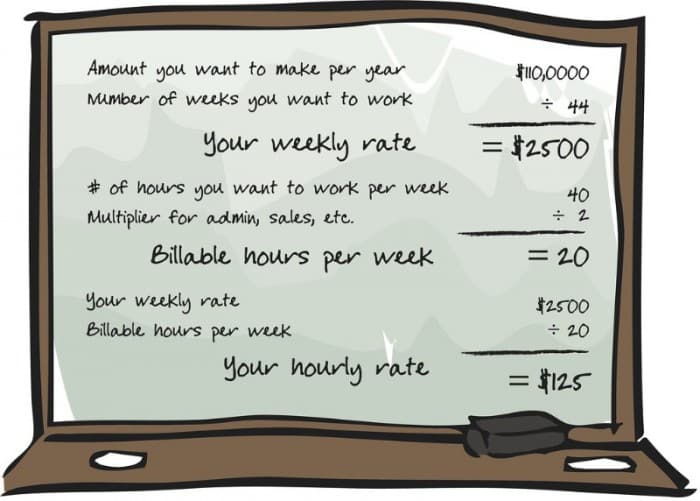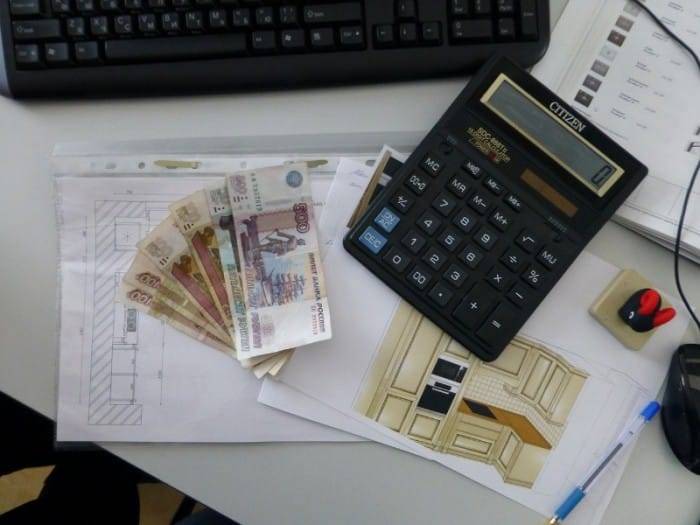Nearly 75% of the freelancers say they would not trade their freelancer job for a nine-to-five. And it makes sense, doesn’t it? While freelancing is better in more ways than one for many people, it can become challenging if you don’t know how to price yourself as a freelancer.
Having your own working hours, taking days off as per your liking, and not having to put up with long hours of commute sound like a dream come true.
However, being your own boss isn’t exactly the easiest thing, considering you have to play every role from manager and accountant to customer support. But before anything else comes pricing.
How to price your freelance work? How to decide how much your work is worth?
Many newbies and even intermediate workers are uncertain about setting freelance rates for their valuable skills.
In this guide, we discuss how to price yourself as a freelancer so that you earn what your skill set is worth.

When learning how to price freelance work, you’ll come across different ways, but hourly charging is still the most common method used by freelancers. Although it’s not the best option out there, it’s still applicable for some gigs.
Here’s how to set your freelance hourly rate:
When learning how to price yourself as a freelancer, start by adding up your expenses.
You need to factor in everything you spend on a job, such as telephone bills, internet bills, rent, business cards, equipment, marketing costs, certifications, professional tools, etc.
Let’s say you’re a freelance writer.
You don’t only have to charge for the content you’re writing but also for the writing course you paid for, your laptop, the utility bills, the office desk you’re using, any platform fees that you may have paid to find the client, stationery, etc.
Most importantly, determine if you’re eligible to pay taxes and how much you have to pay every year.
Again, if you’re using any tax return software, like Liberty Tax, FreeTaxUSA, or Taxact, add their charges to your expenses too.
All these services charge a meager to a moderate fee, but it’s still an extra expense that should come from your earnings rather than your profit.
Come to a total for your annual expenses.
Now, calculate the number of hours you plan on working every day. Sure enough, you won’t be working straight from nine to five every day.
After all, it’s freelancing, and you don’t have a set schedule.
But it’s important to strategize a work ethic for yourself and stick to your daily hours.
Also, make sure you give yourself sick leaves, vacation days, and mental health days in the year.
For daily hours, factor in lunch, email responding, phone calls or video calls, and breaks.
Finally, calculate how many hours you’ll be working daily.
Finally, calculate your freelance rates by dividing your total expenses by the number of hours you intend on working. It will give you a value you should charge per hour of work.
In most cases, this approach works better than coming up with a random per hour rate because it takes all your expenses into account and ensures you’re left with a significant amount in profit.
Consult this guide for more information on how to price yourself as a freelancer.

When you’re learning how to price freelance work, you need to consider all options available. While hourly rates might be easiest to calculate, they don’t always work.
For instance, let’s say you want to know how to price freelance web development, and you end up calculating $100 to be your hourly rate.
Say it takes you three hours to build a website, and it turns out to be absolutely stunning and interactive – something worth well above a thousand dollars.
But since you’ve already quoted $100 per hour, you’ll only get paid $300 for a website that could potentially earn you over $1000.
That’s why many freelancers prefer a per-project rate since it allows them to earn what their hard work is actually worth.
If you feel the hourly rate might not be sustainable for you, here are some other ways to determine how to price yourself as a freelancer.

If you’re not happy with the hourly rate system, make a pricing plan for your services, just like you would on Fiverr.
The freelancing platform lets you create three different plans and specify the offerings for each of them, along with the pricing.
You can do the same even when you’re working off a platform. Let’s explain this to answer how to price freelance writing.
First off, make a list of everything that goes into writing an article, blog, or press release.
You’re not only utilizing time and effort to write something. You must be using editing software like Grammarly or a plagiarism-checking tool like Copyscape too.
How much is the annual subscription fee for each software? Count it in your total expense.
Also, make sure you calculate the electricity charges, desk space, tax, and any other expenditure to come to a total.
After doing this, you can personalize your pricing plans in the following ways:
In this way, you can also filter out clients that may want to underpay you in the guise of negotiations.
If they insist on paying a lower amount, offer them your cheapest package instead of the one with additional perks.
See Related: Business Consulting as a Freelancer 101
If you’re wondering how to price your freelance services without any math, the easiest way is to head over to a freelance website like SolidGigs.
Look for freelancers in your niche and check their rates. It will give you a fair idea of how to price yourself as a freelancer.
As a beginner, you can see how much new freelancers are charging on the platform and what’s the scope for growing financially in your niche as an expert.

If you’re looking for an even simpler method of how to price yourself as a freelancer, use this hourly rate calculator to make sure you’re not underselling your services.
It takes your targeted annual income, expenses (such as marketing, travel, and sales), software license, platform fees, and days off per year to determine your average hourly rate.
The hourly rate calculator adds 15% for business development, which includes everything from learning software usage to taking online courses and setting up your profile on a freelancing platform. But you can also specify a percentage of your own choice.
If nothing else seems to be working, ask a professional in your field about their opinion on what you should charge according to your skill and expertise level. A professional will also give you tips on honing your skills so that you can increase your rates with time.
Are you wondering how to price a logo as a freelancer or charge for your illustrations?
Well, this can be tricky since there’s a lot to consider, and no two freelancers may have the same opinion on the perfect rate for the same quality and level of work.
Let’s just say there’s no hard and set rule or formula for this. Follow the steps below and come up with a project-based or hourly rate that’s best for you.

When figuring out how to price freelance work, you need to ask yourself a few reflective questions. It will help you come to a suitable amount for your projects or per hour services:
Answering these questions will clear a lot of things, making it easier for you to come to a conclusion on how much you can and need to charge.
When determining how to price yourself as a freelancer, you also need to set a monetary goal for yourself. Say you want to earn $80,000 a year. The amount breaks down to:
That comes up to 48 working weeks in a year when you’re spending 50 hours every week at the desk. If you multiply 48 with 50, the total number of annual hours is 2,400.
Now, divide it by the amount you want to earn every year, and you’ll come to a rate. In this case, it’s around $33 per hour.
Now, this approach might not work for everyone because it considers all your working hours as billable, which is not always the case.
If you’re at your desk eight hours every day, you might only spend six of them working and the rest answering emails, making proposals, or marketing.
Therefore, it’s best to calculate your expected rate like this and multiply it by the number of hours you think it will take you to complete a project.
Then, quote a project-based price to your client so that you don’t have to weed out non-billable hours from your work time.

It’s essential for freelancers to understand they must treat their time right.
You’re not merely charging a client for the actual time you spend working but also for the time that it took you to get to a point where you can write a press release or design a logo.
Here are some factors to keep in mind:
As a freelancer, you’ll be spending a lot of your time on admin work, such as creating proposals, sending them to clients, creating profiles on freelancing platforms, organizing your files, scheduling appointments or calls with clients, and budgeting.
Similarly, you’ll also have to calculate your taxes and file them every year because you’re the accountant too. Firstly, you need to factor in the amount you’re paying for administrative tasks.
For instance, are you using an app for budgeting, organization, or scheduling meetings? Does it have a paid plan?
Similarly, HR Block charges $29.95 – $89.95 for tax filing using their software, and TaxSlayer’s prices range from $0 – $54.95 +$39.95 per state return.
Meanwhile, Intuit charges $16 per month to track sales and profits, send invoices, and manage your sales taxes – it’s like a virtual account.
So, when calculating your admin expenses, keep all these things into consideration and also charge for the time you spend on administrative tasks. If you were to hire an accountant or an assistant, what would you pay them annually?
Divide this amount by the number of your working hours, and you’ll come to an amount that you have to add to your hourly rate for admin tasks.
Just like setting up a physical business, you also spend time on setting up your freelancing business.
For instance, it took you time to research different laptops, choose the best one, go purchase it, send it for repairs when required, etc.
Similarly, you would have gone through the same process when finding a work desk or an illustration tablet for yourself.
It refers to the time you spent learning the tricks of the trade. For example, when learning how to price a logo as a freelancer, you must factor in the design course you took, the stylus you bought, and the certifications you might have paid for.
You obviously must spend a lot of time on getting new clients, such as forming proposals, sending them, keeping your freelance platform profiles updates, answering queries of potential clients, etc.
All this time contributes to your chances of success at bagging a new client. Don’t let yourself do all this for free. Let’s say if you had a lead generator or marketer for your business. What would you pay them?
Now, add this amount to your project-based or hourly rate because you’re doing the additional job of finding clients.
Finally, charge for the actual work you’re doing and the time spent on it. If your estimated hourly rate for your niche is $38, it will add up to $50 once you consider all the time discussed above.
Make sure you’re charging accurately for your services to ensure sustainable and profitable growth as a freelancer.

Freelancers often tend to make some mistakes when pricing themselves or dealing with clients.
Here are some common mistakes to steer clear of:
Sooner or later, you’ll come across a client who’ll have grand requirements but then hit you with the age-old ‘we have a small budget’ line.
Know that this is a red flag in most cases.
Don’t fall for it unless you’re sure this gig will end up becoming a long-term project that you can afford to do at a lower-than-usual rate.
MAR is the minimum acceptable rate that you set for yourself. If you normally charge $50 per hour, you can set your MAR at $45, leaving $5 for negotiations.
However, don’t stoop down to $35 or $30 because you’ll be doing yourself an injustice.
Let’s say Project A will take you three hours to complete, and so will Project B. But the latter is more complex.
Do you charge the same amount for both tasks since you’re spending the same amount of time on them? No.
Don’t make the mistake of underselling yourself simply because a task may be shorter. If it’s more complex than a longer task, you should charge a higher rate for it.
Most freelancing platforms such as Fiverr or WriterAcess use USD as their standard payment currency. However, keep in mind that the conversion rate differs across geographic regions.
While $40 might not be much for a US client, it may be too high for a client in India or Venezuela. That means you should keep your client’s geographical location in mind when determining how to price yourself as a freelancer.
For example, European or American clients are likely to pay higher than Asian clients for the same task.
If the job is worth $28 per hour in Asia, you can quote $35 per hour to the western clients.
Pricing yourself as a freelancer may sound easy. But when you have to consider multiple factors, it can get slightly difficult and lengthy. However, it’s an important administrative step that you should not miss because pricing accurately translates to higher profits.
Think about setting freelance work prices according to its complexity and future potential. Otherwise, with a standard rate for each task, you’ll end up earning less than you should.
We hope this guide helped you learn how to price your freelance work by being fair to yourself and your clients.
Related Posts
Last updated: September 1, 2023